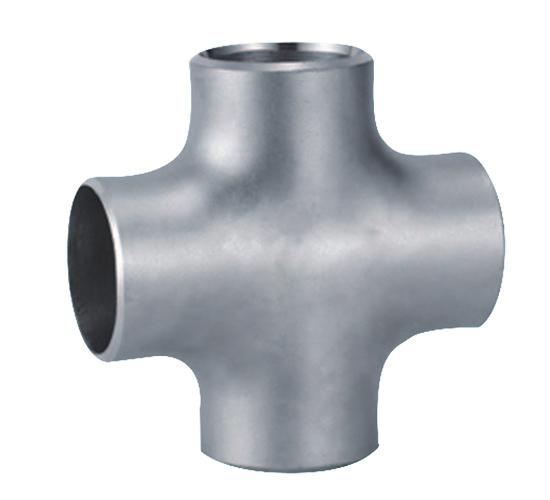-
Cangzhou Yulong Steel Co., Ltd.
-
Phone:
+86 13303177267 -
Email:
admin@ylsteelfittings.com
- English
- Arabic
- Italian
- Spanish
- Portuguese
- German
- kazakh
- Persian
- Greek
- French
- Russian
- Polish
- Thai
- Indonesian
- Vietnamese
- Zulu
- Korean
- Uzbek
- Hindi
- Serbian
- Malay
- Ukrainian
- Gujarati
- Haitian Creole
- hausa
- hawaiian
- Hebrew
- Miao
- Hungarian
- Icelandic
- igbo
- irish
- Japanese
- Javanese
- Kannada
- Khmer
- Rwandese
- Afrikaans
- Albanian
- Amharic
- Armenian
- Azerbaijani
- Basque
- Belarusian
- Bengali
- Bosnian
- Bulgarian
- Catalan
- Cebuano
- China
- China (Taiwan)
- Corsican
- Croatian
- Czech
- Danish
- Esperanto
- Estonian
- Finnish
- Frisian
- Galician
- Georgian
- Kurdish
- Kyrgyz
- Lao
- Latin
- Latvian
- Lithuanian
- Luxembourgish
- Macedonian
- Malgashi
- Malayalam
- Maltese
- Maori
- Marathi
- Mongolian
- Myanmar
- Nepali
- Norwegian
- Norwegian
- Occitan
- Pashto
- Dutch
- Punjabi
- Romanian
- Samoan
- Scottish Gaelic
- Sesotho
- Shona
- Sindhi
- Sinhala
- Slovak
- Slovenian
- Somali
- Sundanese
- Swahili
- Swedish
- Tagalog
- Tajik
- Tamil
- Tatar
- Telugu
- Turkish
- Turkmen
- Urdu
- Uighur
- Welsh
- Bantu
- Yiddish
- Yoruba

Dec . 01, 2024 17:26 Back to list
ansi b16 1 class 250 flanges
Understanding ANSI B16.1 Class 250 Flanges
ANSI B16.1 is a standard developed by the American National Standards Institute (ANSI) that provides guidelines for the design and manufacturing of cast iron flanges. Among these, Class 250 flanges hold a significant place in various industrial applications due to their reliability, strength, and dimensional accuracy. This article will discuss the features, applications, and importance of ANSI B16.1 Class 250 flanges.
What Are ANSI B16.1 Class 250 Flanges?
Flanges are external or internal ridges, edges, or protrusions used to facilitate the joining of two separate components in piping systems. They are essential in ensuring a tight and secure connection that can withstand high pressures and temperatures. ANSI B16.1 Class 250 flanges are made of cast iron, specifically flanged fittings that are rated for a specific pressure-temperature relationship.
The Class 250 designation indicates that these flanges are rated to withstand pressures up to 250 psi at a corresponding temperature. This classification helps engineers and designers select the appropriate flanges for their piping systems based on the expected operating conditions.
Material Composition
Class 250 flanges are primarily made of gray cast iron compliant with the ASTM A126 specification. This material is chosen for its excellent mechanical properties, durability, and resistance to corrosion. The cast iron composition provides the necessary weight and strength, allowing these flanges to handle the mechanical stresses encountered in various applications.
Features and Specifications
ANSI B16.1 Class 250 flanges come in various sizes, shaped as either raised face or flat face. They are designed to be bolted to pipes, valves, and other equipment, forming a reliable seal to prevent leakage. The dimensions adhere to strict standards, ensuring compatibility with other components in the piping system.
Some key features of Class 250 flanges include
- Pressure Rating Designed to handle pressures up to 250 psi. - Temperature Range Suitable for temperatures typically encountered in water and steam applications. - Standardized Dimensions Ensures ease of installation and interoperability with other ANSI B16.1 standard components.
ansi b16 1 class 250 flanges

Applications
ANSI B16
.1 Class 250 flanges are widely used across various industries, including1. Waterworks These flanges are commonly used in water distribution systems due to their durability and ability to maintain a secure seal under pressure.
2. Wastewater Management In sewage treatment plants, Class 250 flanges facilitate connections in large diameter pipes, ensuring the smooth flow of treated and untreated water.
3. HVAC Systems Used in various heating, ventilation, and air conditioning applications, Class 250 flanges help connect ductwork and piping systems.
4. Industrial Applications They are also beneficial in manufacturing and processing plants where piping systems require secure fittings to handle various fluids and gases under pressure.
Importance of ANSI B16.1 Class 250 Flanges
The importance of ANSI B16.1 Class 250 flanges cannot be overstated. They ensure the integrity and safety of piping systems by providing robust connections capable of withstanding various operating conditions. Properly installed flanges reduce the risk of leakage, which can lead to costly downtime, environmental pollution, and safety hazards.
Furthermore, adherence to ANSI standards ensures that all components can work together seamlessly. Engineers can make informed decisions when selecting flanges based on their pressure and temperature ratings, which helps in the design of efficient and reliable piping systems.
Conclusion
In conclusion, ANSI B16.1 Class 250 flanges are critical components in myriad industrial applications. Their robust construction, standardized dimensions, and ability to handle significant pressure levels make them indispensable for creating reliable piping systems. As industries continue to evolve, the adherence to standards like ANSI B16.1 will remain a crucial aspect of engineering, ensuring safety and efficiency in various operations. Understanding these flanges allows engineers, technicians, and operators to appreciate their value and functionality, reinforcing their role in modern infrastructure.
Latest news
-
ANSI 150P SS304 SO FLANGE
NewsFeb.14,2025
-
ASTM A333GR6 STEEL PIPE
NewsJan.20,2025
-
ANSI B16.5 WELDING NECK FLANGE
NewsJan.15,2026
-
ANSI B16.5 SLIP-ON FLANGE
NewsApr.19,2024
-
SABS 1123 FLANGE
NewsJan.15,2025
-
DIN86044 PLATE FLANGE
NewsApr.19,2024
-
DIN2527 BLIND FLANGE
NewsApr.12,2024
-
JIS B2311 Butt-Welding Fittings LR/SR 45°/90° /180°Seamless/Weld
NewsApr.23,2024











